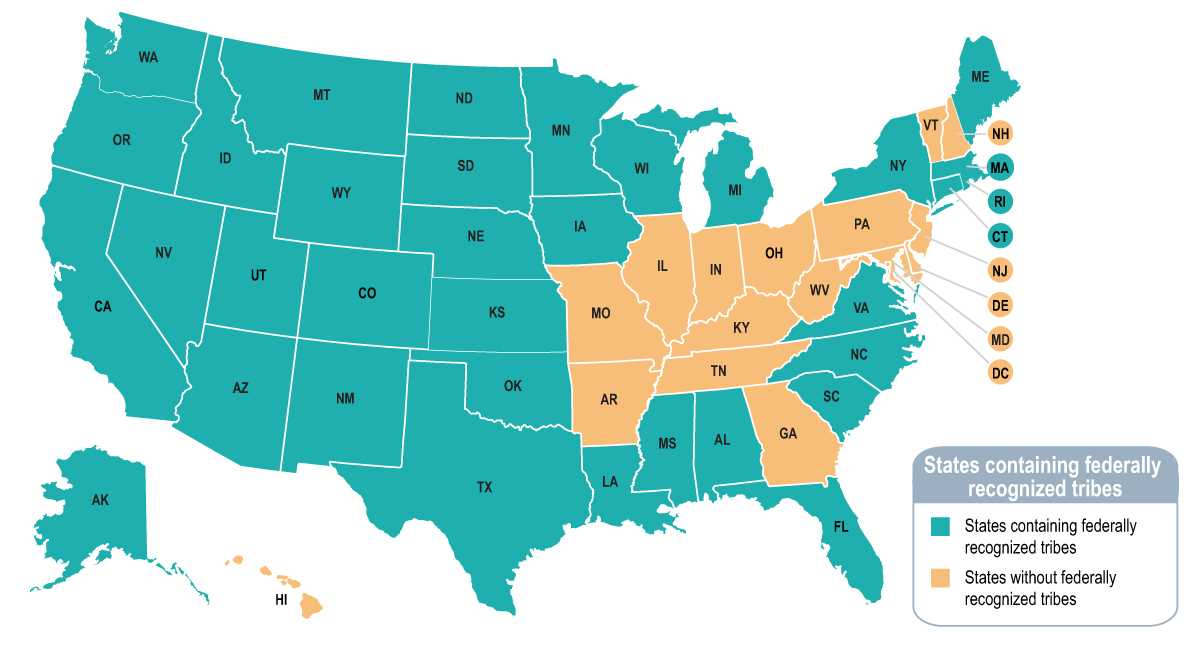Tribal Geography in Relation to State Boundaries
According to the 2010 American Indian Federal Reservations data compiled by the US Census Bureau and the Bureau of Indian Affairs

- 12 tribes have jurisdictions that cross multiple state boundaries1,2—
- Colorado River Indian Tribes of the Colorado River Indian Reservation spanning Arizona and California
- Confederated Tribes of the Goshute Reservation spanning Nevada and Utah
- Fort McDermitt Paiute and Shoshone Tribes of the Fort McDermitt Indian Reservation spanning Nevada and Oregon
- Fort Mojave Indian Tribe of Arizona, California and Nevada spanning Arizona, California, and Nevada
- Iowa Tribe of Kansas and Nebraska spanning Kansas and Nebraska
- Navajo Nation spanning Arizona, New Mexico, and Utah
- Pokagon Band of Potawatomi Indians located in Michigan with a statistical area in Indiana3
- Quechan Tribe of the Fort Yuma Indian Reservation spanning Arizona and California
- Sac and Fox Nation of Missouri in Kansas and Nebraska spanning Kansas and Nebraska
- Standing Rock Sioux Tribe of North and South Dakota spanning North Dakota and South Dakota
- Ute Mountain Ute Tribe of the Ute Mountain Ute Reservation spanning Colorado, New Mexico, and Utah
- Washoe Tribe of Nevada and California spanning California and Nevada
- Department of the Interior, Bureau of Indian Affairs. Indian entities recognized and eligible to receive services from the United States Bureau of Indian Affairs [PDF-189KB]. Federal Register 2015;80(9):1942–8.
- US Census Bureau. American Indian Reservations (Federal): 2010. (n.d.) [PDF-239KB]. Accessed Jul 8, 2015. Off-reservation trust lands are areas for which the United States holds titles in trust for the benefit of a tribe (tribal trust land) or for an individual American Indian or Alaska Native (individual trust land).
- The Pokagon Band of Potawatomi has a tribal designated statistical area in South Bend, Indiana; however, this does not count as a federally recognized tribe for the state of Indiana.
- Page last reviewed: June 22, 2017
- Page last updated: June 22, 2017
- Content source:


 ShareCompartir
ShareCompartir



